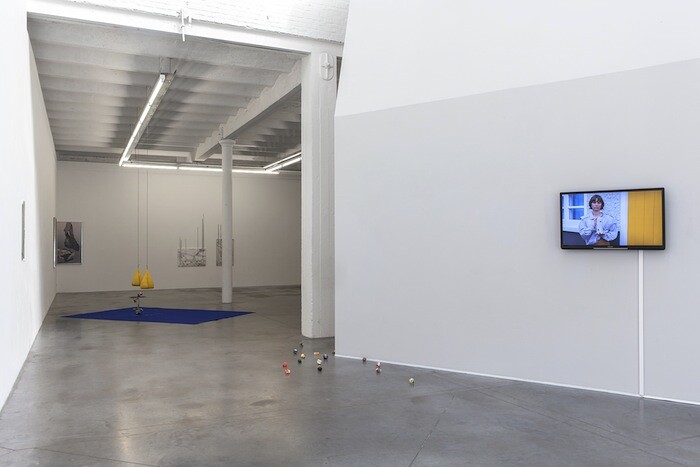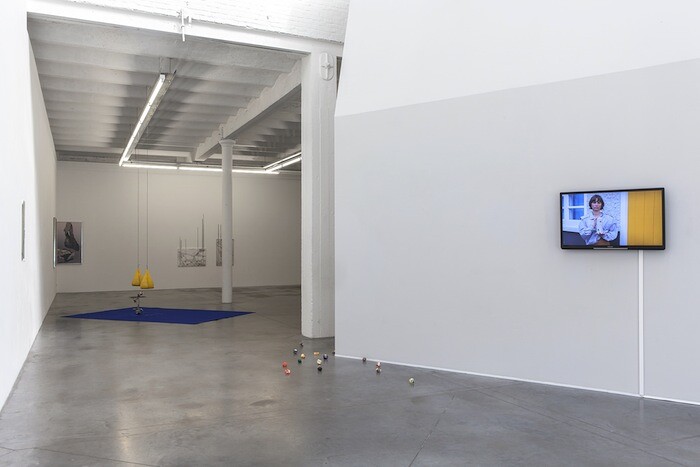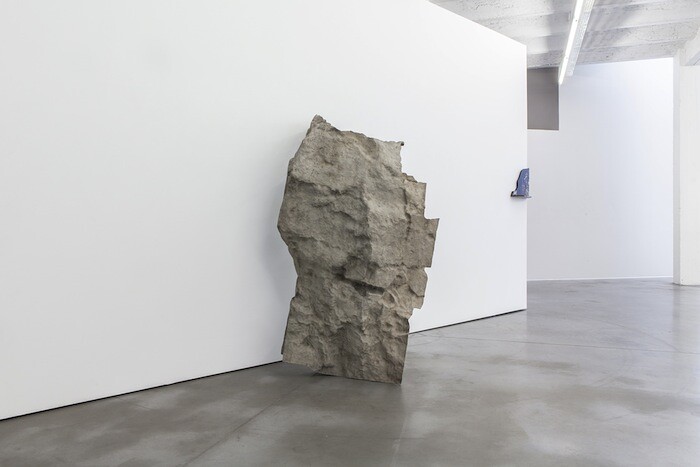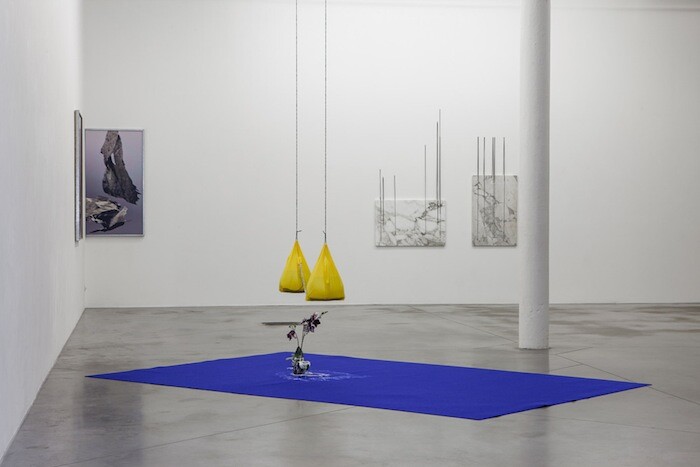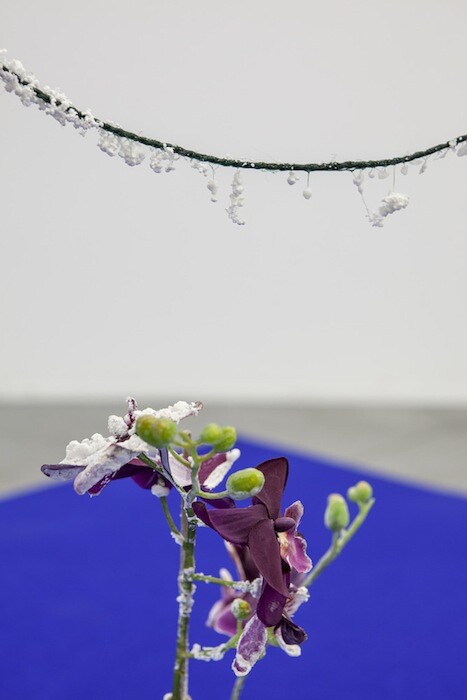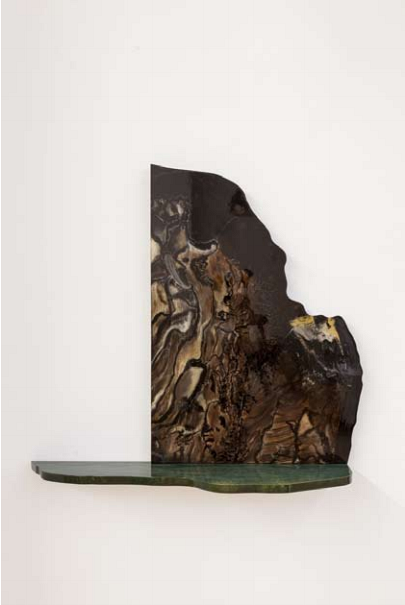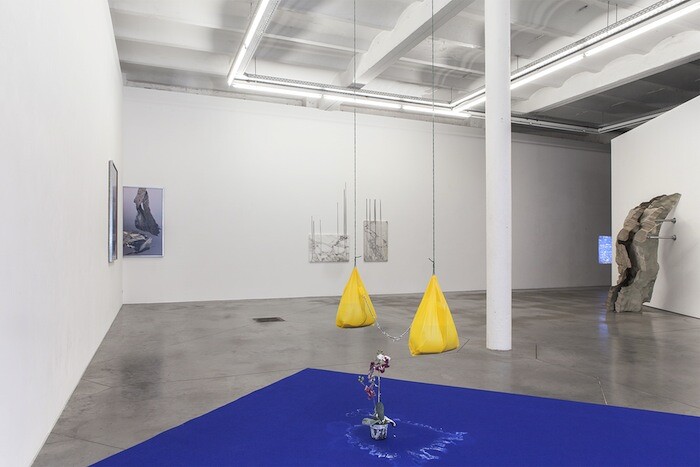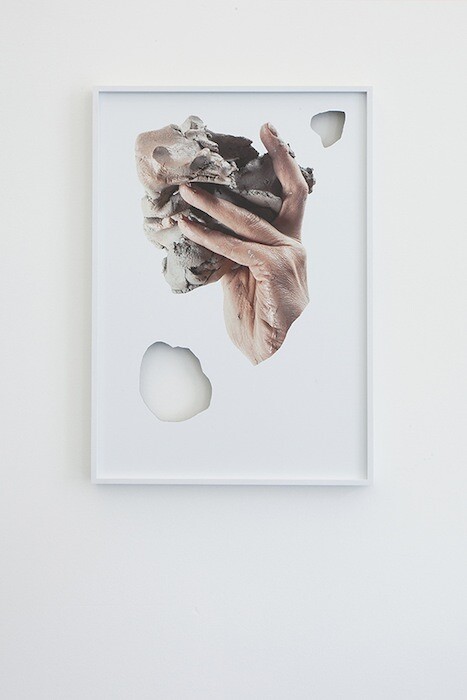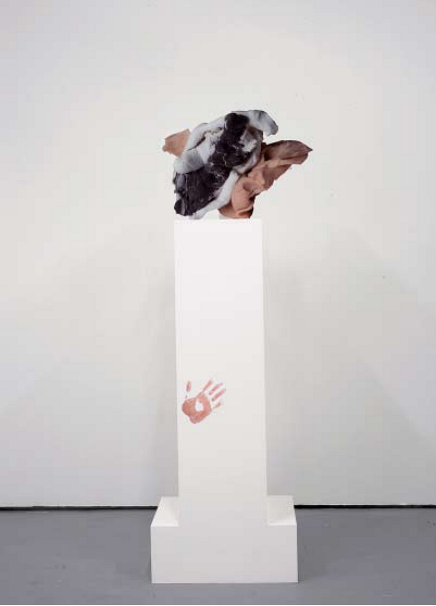Stones have been “in” for quite some time: in recent years the “artist as archaeologist” has been rubbing shoulders—and comparing excavation gear—with the artist as geologist or speleologist, figures who have thus far received less scrutiny. Curated by Evelien Bracke, “Listen to the Stones, Think Like a Mountain” borrows the two halves of its title from the novelist Marguerite Yourcenar and environmentalist Aldo Leopold respectively, with polymath (and mineralogist) Roger Caillois as a tutelary figure. While Leopold’s injunction to “think like a mountain” does not echo in or between the works, the exhibition succeeds when it is closest to Yourcenar’s homage to Caillois, who taught her to hold the gaze of stones.
A series of juxtapositions in the show capture a paradoxical relation to stones, which are both obstacles to thought—by the unthinkable expanses of time they conjure—and conduits for reverie—disruptive or illuminating encounters with inertia or oblivion. Their uncanny photogeny and millennial indifference engenders a particular form of attention, a listening to the enigmatic shapes and temporal densities stones carry, a reciprocation of their murmured solicitation. For Caillois, the same lattices of meaning meander through the earth’s crust, insect behaviour, ritual or “primitive” belief: pebbles arrest this universal syntax—the “algebra, vertigo and order”1 of the world—in substance, as photographs fix an image. Some of the projects here update his “exact imagination,” contrasting the stilled whorls of matter and time stabilized in stones to a contemporary sense of dislocation, mineral counterweights for what would otherwise feel imponderable.
In one of the exhibition’s most compelling moments, Eleanor Duffin’s Iteration II (2015) is paired with Carlos Irijalba’s Untitled (Skins) (2014). Duffin’s homespun, delicate contraption pits water, heat, electricity, plastic bags, a flower pot, calcium, and sodium against one another to produce lime scale, as an accelerated metonym of geological processes. Left to itself, Iteration II would continue to secrete—beyond the duration of the exhibition—diminutive stalactites, be engulfed by mineral outgrowths, and eventually disappear into a scale model for live cave formation. Overlooking its patient accretions of matter in the wrong place, Irijalba’s assembly-line tectonics tell a different story of misaligned timelines and technologies. The cave wall casts in the series “Skins” evoke economic crisis, deep time, and fast obsolescence. A Madrid company had been commissioned to furnish replica caves in Southern Spain with prints of the original walls—originals that were to be sealed off and preserved for archaeological inspection. Irijalba notes that the caves had become “allergic to humans,” their paintings infested by the microorganisms that modern visitors carried in their breath. In 2010, the economic crisis slowed down the duplication program and brought the company to the brink of bankruptcy. Their files, recording details of tectonic deformation, were no longer decoded into simulacral caverns, as they were—saved to Zip drives—all but unreadable. In this incidental overlap of illegibilities—closed caves and disused digital storage devices—the artist hears the pulse of a “metabolism of magnifying losses” marking the passage of time at different speeds. The mineral integuments Irijalba exhibits recuperate the information on those floppy discs and reproduce it serially. Their disquieting functionality morphs into a metaphorical ecorché: an inert, petrified interface between no sentient body and no comprehensible world. This references the current tribulations of the notion of heritage, pushed and pulled between the doggedly Hegelian work of UNESCO—clarifying a linear progression of human spirit and constructive ingenuity at the expense of the intricacy of the site that is celebrated and preserved, often restored to its target year by obliterating its organic growth into other centuries, forms, and modes of habitation—and the fickle “history” of internet searches. “Heritage,” between toppled monuments, ruins employed geopolitically or in violent demonstrations of ideology, and our inability to keep up with reports of global ravage.
Nicolás Lamas’s Strata (2015) comprises sixteen modified billiard balls: cut, polished and deformed, the polyhedrons exit the functionality of game—or would condemn that game to an exasperating slowness or unpredictability. With chunks peeled away or chiselled, the balls evince a vaguely repugnant stratigraphy of colors and post-industrial goo, as if film stills, flickers, and spasms from Alain Resnais’s film Le chant du Styrène (1958) had been recorded in phenolic resin. The architect Anne Holtrop contributes a series of his “Shelves” (2014), furniture objects painted with details from Caillois’s mineralogical collection. Rather than simulate the preciousness of having been cut from agate, jasper, or onyx, the slabs are adorned with blow-ups of those materials: trompe l’oeils of their crystalline configuration, as well as nods to centuries of speculation attempting to divine a universal order from the entrails of stones, from accumulations of fossilized matter and movement.
Two videos by the duo buren (Oshin Albrecht & Melissa Mabesoone), Concrete and Marble (both 2014), dramatize moments of fetishistic encounter with architecture, its materials and disciplinarian reflexes. A faint promiscuity pervades them, a desire to wrest something from the obdurate stillness of material or from the bland serviceability of a building—a modicum of intimacy from concrete’s malleability, an interlocking of architectural corners and bodily convexity. A feminine Pygmalion-like figure, camouflaged in pyjamas decorated with a rocky pattern, slides down a monumental staircase in a choreographic ode to and against the neutrality of architecture. In Rachel de Joode’s Allotrope (2014) photographs, hands holding or moulding clay are severed from both the identity of maker and of finished work. Almost reflective in their emphatic digitalness, the works point to another trajectory in Caillois’s prolific research: not the stone whisperer, but the theorist of legendary psychasthenia. At our most disembodied, these prints seem to suggest, we are at our most petrological: stones and screens, geologies and tactile interfaces are part of a physical continuum. The allotropy of the title suggests the rapturous instant at which two forms of the same substance contemplate one another from opposite sides of the recording apparatus. Touching the materials that sustain our surfeit of visuality, navigating through the possibilities of emancipation they seem to offer, our fingertips reach into the substrate of the world. Not unlike Caillois’s split subject, seeing himself from the other side of his senses, De Joode’s inchoate clay forms appear both as what is being registered, in its progress towards meaning, but also as that which allows that registration to occur.
Roger Caillois, Pierres (Paris: Gallimard, 1966), 8.
